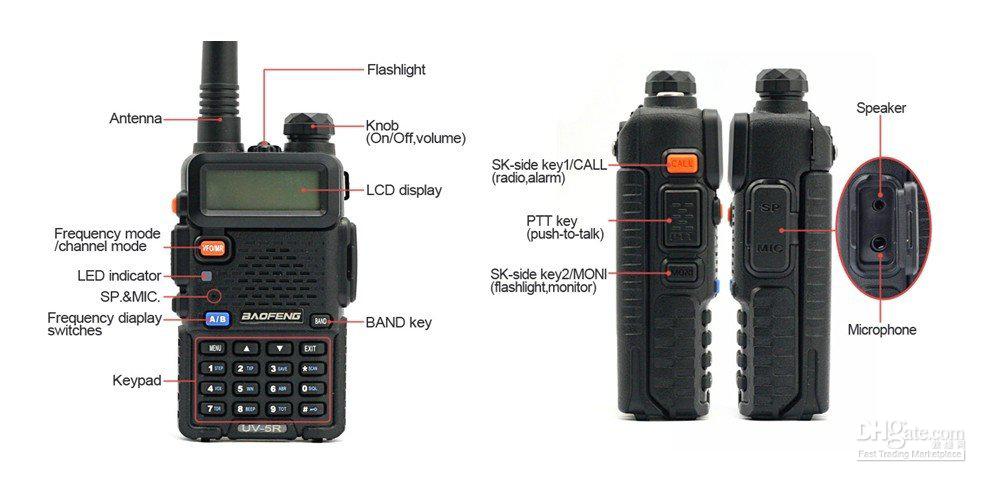
Long-term survival necessarily requires a community that can sustain itself. As I have no family, I am more focused on this objective than those who must be concerned with a family to feed. However, this topic should be of more concern to those with progeny to consider. Without a plan in place and in action now, we might as well be planning to fail. A plan, any plan, is better than no plan. The process of continually planning is also more important than any one plan, As a rule, we should be continually be assessing a changing environment and discovering new information, and continually learning, and henceforth, we should be continually improving our plans. Hopefully, this article can supply the reader with a template they can use on a larger or smaller scale plan.
Location, Location, Location
Being located and involved with a community that is mostly like-minded, and has the necessary resources, is essential. If we have studied Group Dynamics, then we know that the smaller the group, the stronger the sense of community, and the greater cohesion. A larger community is less desirable than a smaller community in any assessment if the smaller community also processes the necessary resources, and the correct mixture of skills and knowledge. I’ve noted over the decades, that the further away from the land are we, the less down-to-earth we tend to be, the more egocentric, and the further away from God we become.
As important as any other factor in my calculus is that an agrarian society of the correct size would have the strongest sense of community, and enough horse sense to work together, and the necessary resources. Unfortunately, my neighbors are not predominately Amish, or agrarian, yet survivalists represent an abnormally high concentration and percentage of the demographic. If we are not located in such a place, then a community communications plan is of less importance. In any case, the article can be helpful to those who only have a smaller number of group members to work with.
Push/Pull Marketing at Work Within a Community
To put a community that has potential on the fast track for long-term sustainability, over the years, I began first by utilizing a classic marketing technique that creates interest that eventually evolves into a demand for radio communications. Encouraged by the result, I am supplying the essential and missing parts that are the means that could help my community improve the cohesion that eventually would create a strong sense of community, an island economy, and a community that can better defend itself. The inclination to communicate is there. That key and missing ingredient will be radio communications. Without it, we got nuth’n. Consider that we have a society that is addicted to Smart Phones and the internet, instant, worldwide communications. What will we do without it!? We will beg for any available information. Information will become a commodity for exchange. Even our local Amish community has radios and solar power, yet we are lacking.
We can build a tiered and diverse system employing 2-Meter and HF, yet primarily for the majority, a simple low-powered radio network using commonly available and inexpensive transceivers. This network is coming to fruition in my neighborhood. Home-built and other low-power repeaters can bring together several secluded mountainous area with enclaves of survivalists, and yet limit the propagation that will be mostly contained within this valley. Several relay stations outside this valley is also being sought to connect us to another community with more resources. Doing radio surveys, and other testing proves that this is possible. Finding the talent that can run a relay station and assist those closest to them, is also proving to be viable, and is in the process of becoming a reality.
A Feasibility Study
This is a synopsis of a Radio Survey, that could be considered a feasibility study for radio communications in my Area of Operations (AO) that was recently conducted. The study is necessary to determine the design requirements for a communication system for the service the area. It also finds the limits of an affordable approach, that is where coverage in not possible without the outlay of a serious investment. Balanced with the need for COMSEC, a designed based upon a radio survey will improve COMSEC. For example, there can be areas where low-power transmissions propagate outside the AO reducing COMSEC. In this situation, directional and horizontally polarized antennas, and terrain masking can be used to mitigate.
Tips and Tools of the Trade
VHF is the better performer than UHF in terrain covered where there are dense pine forests, most of the time, yet not all of the time. Objects such as metal roofs, metal buildings, parked cars or solid rock faces located miles away can reflect or bounce the signal around a terrain obstacles such as tall hills. Radio waves can multipath and can propagate further and in direction other than anticipated. The terrain features nearest where the signal originates is the greatest factor in how well the signal propagates. Height is might, but if we can not clear the nearby trees with enough height, then the signal received or transmitted will likely be attenuated. In this setting a horizontally polarized or directional antenna might make communications possible when it would otherwise not be. We must always keep COMSEC in mind when designing a system and employing selected equipment.
Again, VHF is not as affected by foliage as is UHF. Horizontally polarized VHF finds its way around trees better than vertically polarized VHF signals. Vertically polarized receiving antennas receive horizontally polarized propagation that is attenuated by as much as 20Dbd. A horizontally polarized communications network can use its low-power transmissions more efficiently and is a low-cost way to improve COMSEC by a significant measure. We can also use more power, if absolutely necessary, in a horizontally polarized circuit without the same risk of reducing COMSEC that comes with a vertically polarized circuit. In some locales, we might choose a high gain directional antenna as a receiving or transmitting antenna on one frequency, and use another frequency to transmit using a lower power or low Effective Radiated Power (ERP) on an omni-directional antenna to all other surrounding stations.
Horizontally polarized directional and omnidirectional antennas can be the best solution in some situations where terrain masking is not possible. Moxon antennas have a very high front-to-back ratio, yet provide a nearly 180 degree RF footprint or coverage area to the front. A Moxon antenna that is horizontally polarized can attenuate a signal to the rear by an impressive 40Dbd. Attenuate a 1 watt transmission by 40Dbd, and the signal out the back of a Moxon is harder to hear, and the signal to the front is not excessively strong as it would only have an ERP (Estimated Radiated Power) of just over 2 watts. And this antenna improves the signal-to-noise ratio (SNR) in our favor if we would be listening for weak signals.
The Moxon directional antenna can be a sensible choice. Constructed with 1/2 copper pipe, these antennas can be exceptionally wide-banded and dual-banded. A 2- or 3-element yagis can also be used, but the Moxon has better overall performance and advantages that make it superior in this application. A 5-element yagi has certain and superior characteristics over a Moxon in some important ways, yet this goes beyond the topic at hand. I am not discussing clandestine operations where I would hope to use low-power portable HF, digital modes or CW, encryption, One Time Pad (OTPs), and Near Vertical Incident Skywave (NVIS) propagation, but only low-cost, low-power operations using common analog transceivers. Boring stuff for many, yet arguably more important. Without the logistics provided, it isn’t going to matter.
Low Power is Our Friend
Low power is our friend if COMSEC is the priority. Using only low-power settings, and an ERP of no greater than 6 watts, provides reliable coverage for an AO that is mostly a valley. Coverage of up to 10 miles was determined along a county road in either direction using only the humble Baofeng UV5R on a VHF J-pole mounted only 10 feet in elevation as a simulated low-power base station to a hand-held Baofeng UV5R with the tallest Nagoya 771 antenna. An extreme range of 30 miles was possible in under less than ideal conditions, yet this test was outside the valley.
Inside the valley, the range was variable and appreciably shorter. In one direction, the range was only 2 miles, and yet in another direction, 8 miles was the limit. Higher power settings, or an increased ERP does not necessarily increase the range much, but will more often than not provide better clarity and louder audio, and therefore a better copy needed for the causal listener. Ideally, if we are on the edge of acceptable reception at a predetermined geographical point that defines our AO, then we have discovered the optimally useful range and ERP, and choice of equipment. Given the limitations of the equipment that requires the receiving station to listen carefully at extended ranges is a good choice as the signal will be less likely to be intercepted by outside receivers.
Where the range is inadequate, there might be enough neighbors with radios available to relay a message, or a higher powered mobile transceiver, or higher gain antenna such as a directional or omnidirectional can be used. Where there is an enclave of isolated survivalists, a low-powered simplex or cross-band repeater could be used, or as alternative, a very high gain omnidirectional antenna such as the Tram 1481 could be used if there is terrain that can mask a stronger signal and retain it within the AO. This radio survey was used to examine the greater AO, and not a smaller area of only a few square miles. There will be ‘RF holes’ or ‘dead spots’ within the greater area. The survey discovered that an ERP of around 10 watts allows a VHF signal to be heard outside the valley, therefore only a maximum of 5 watts with antenna with a gain of no more than 4dbi, or less, should be used in most installations.
For the sake of COMSEC, a 1/4 wave ground plane antenna, or simple dipole is the safest choice in many locations. An external 1/4 wave antenna mounted 20 feet above the ground provides an increase in signal strength over a standard handheld transceiver’s antenna of about 7.75 Dbd (Dbd, not Dbi). An external antenna will be needed in most locations. In addition to providing several low-power repeaters, if needed, I am also prepared to install a very low-cost home-built dipole antenna using RG59 or RG6 coaxial cable that is already installed in most homes.
The equipment required for the described AO is affordable, and I suspect would be adequate for most AOs as well. Yet there are even lower cost options available to innovative operators. While a simple dipole or 1/4 wave antenna fed by a 72-ohm cable is not normally advised, the usual broad bandwidth of a 1/4 wave, or dipole antenna can provide an acceptable SWR of 1.5:1 near the design frequency using 72-ohm cable. By the way, a dipole is a 72-ohm antenna. A relatively unknown and simple matching technique makes low SWRs possible when using 72-ohm cable that is RG59 or RG6. Simply calculate the actual length of the center frequency, and measure out lengths of the cable in whole sections of that length, and terminate using whole wavelengths. In the case of 11 or 10 meters, there could be a considerable amount of excess cable left over, but that is the trade-off if a lower SWR and a wider bandwidth are necessary. This cable can be a useful alternative and again it can be found when no 50ohm coaxial cable is available. 72-ohm cable is perfectly acceptable for use with receivers or scanners.
(To be continued tomorrow, in Part 2.)

